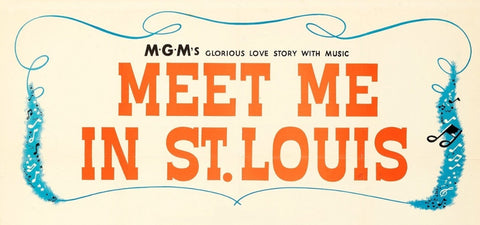
In evaluating the life and works of Roald Dahl, the author whose beloved books have shifted over 300 million copies, much has been made of the intense shades of darkness that frequently touched his world. He lost his dad and older sister when he was very young. He was traumatised by the severe corporal punishment he experienced at boarding school. As a pilot, he crash-landed his plane during World War II and sustained injuries that gave him pain and discomfort for the rest of his life. His first wife, Patricia Neal, suffered a stroke and their marriage ended after he had a lengthy affair. More tragedy struck their children; their son Theo was only four months old when his pram was hit by a taxi, leaving him with brain damage, and their daughter, Olivia, died when she was only seven.
No author writes in a bubble so all this must have had some influence on Dahl’s writing, and the world of his children’s novels is a macabre one. It’s a forlorn and somewhat threadbare land of neglected and/or orphaned kids, spiteful bullies, mean-spirited adults, and fiendish comeuppances. The vivid yet bleak nature of Dahl’s imagination is matched by the scribbly illustrations of Quentin Blake, not the first artist to provide images for the author’s work, but certainly the most attuned to his prose.
Dahl’s books remain just as popular today, which is little surprise. Kids have incredibly ghoulish imaginations and Dahl had a knack of digging into the gross stuff that children adore without ever wagging a finger at them for loving it so much.
Dahl’s writing is very visual and his books have provided a rich source of material for the screen. In fact, given their enduring popularity over so many years, it is kind of shocking that there aren’t more. Here are eight of the best, according to my kids.
8. James and the Giant Peach (1996)
Although Dahl had written one children’s story before (The Gremlins in 1943) he was mainly a writer for grown-ups until James and the Giant Peach was published in 1961. Inspired by a cherry tree in Dahl’s orchard, the titular fruit was originally intended to be a giant cherry until he settled on a peach. He also introduced creepy-crawly characters because he felt that Beatrix Potter and A.A. Milne had already taken all the more popular animals.
Disney considered a movie version in the early ‘80s but executives felt that it would prove too costly and the subject matter too weird. One animator who came into contact with the book during the process was Henry Selick, who had worked on several Disney pictures including Pete’s Dragon and The Black Cauldron.

Several years later, Selick got his big break when Tim Burton handed over the reins to The Nightmare Before Christmas, providing a showcase for the animator’s distinctive stop-motion style while still feeling very much like a Tim Burton movie. After it proved a success, Burton used his clout to push forward with James and the Giant Peach, with Selick again animating and directing.
As fantastic as Selick’s animations are, he isn’t the most instinctive director. It was noticeable in the pacing of The Nightmare Before Christmas and it becomes even more apparent with Peach, a story that is pretty light on incident anyway. My kids got fidgety watching it and we didn’t even make it through to the end, so it is their least favourite Dahl adaptation to date.
7. Fantastic Mr. Fox (2009)
Inspired by a tree in Roald Dahl’s garden at his home in Buckinghamshire, Fantastic Mr. Fox became the tale of a loving father trying to protect his wife and four children from painful death and starvation. That’s what I got from reading the book to my kids, and the Grim Reaper looms over the page for almost the duration of the story until Mr. Fox devises a cunning scheme to rob three grotesque farmers of their livestock and cider.
Wes Anderson might not have seemed like an obvious choice to direct an animated version of the story, but he has declared that Roald Dahl is one of his heroes in the past. He also had some experience with animation, thanks to the fantastical stop-motion marine creatures designed by Henry Selick for The Life Aquatic with Steve Zissou. Selick was on board again for Fantastic Mr. Fox, which Anderson penned with fellow hipster smart-alec Noah Baumbach.

Together, they padded the story out to feature length and turned it into a heist movie of sorts, and naturally Anderson was able to attract a stacked cast for the voice-over work. George Clooney brought his debonair roguishness to the role of Mr. Fox, joined by Meryl Streep as Mrs. Fox and a gallery of Anderson regulars including Willem Dafoe, Jason Schwartzman, Owen Wilson, and, of course, Bill Murray.
Selick’s stop-motion designs match very well with Anderson’s quaint, symmetrical tableaux, giving the film a pleasantly tactile old-school feel that could have come straight out of the homespun world of Oliver Postgate. However, Anderson’s usual meandering storytelling and deadpan humour left my kids a little cold, resulting in more fidgets.
6. Willy Wonka & The Chocolate Factory (1971)
While Charlies and the Chocolate Factory has always been one of Roald Dahl’s best-loved cautionary tales, it has also been a source of controversy since it was first published in 1964. A major issue was the portrayal of Willy Wonka’s slave-like Oompa Loompas, which were originally described as black pygmies from Africa.
The 1971 film version solved that problem by slapping green wigs on a bunch of little people and painting them orange instead. Dahl himself changed their appearance for the 1973 edition of the book, but the Oompa Loompas have never shaken their exploited nature. Now there is further controversy about the casting of Hugh Grant as one in the upcoming Wonka.
Mel Stuart’s beloved adaptation regularly features on lists of the best family films ever and it is a marvellous star vehicle for Gene Wilder, who was on a hot streak at the time. His role as the reclusive and eccentric confectioner was sandwiched between his Oscar-nominated turn in The Producers and nailed-on comedy classics Blazing Saddles and Young Frankenstein. He wasn’t the first pick to play Wonka, however. Several other high-profile names were in the running including Fred Astaire, Joel Grey (Cabaret), Ron Moody (Fagin from Oliver!), and Roald Dahl’s preferred pick, Spike Milligan.

Once Wilder got the gig, he made the role his own. He only accepted the part on the condition that he could make his entrance in a specific way: Mr. Wonka, apparently disabled with a bad limp, would enter slowly, walking with a cane. The crowd looks dismayed as the walking aid gets stuck between two paving stones. Wonka keeps walking until he realises that his cane is missing, then falls forward alarmingly… before tucking into a graceful roll and back onto his feet, prompting wild applause.
His reasoning was from that moment nobody would know whether he was lying or telling the truth, and Wilder brought similar devilment to his entire performance. No wonder we now have the “condescending Wonka” meme.
The pacing was once again an issue for my children’s appreciation of Willy Wonka & The Chocolate Factory. In truth, it drags far more than I remembered between the great moments and songs that everyone knows by heart. Wonka’s factory also looks a bit threadbare to the modern eye, looking like the Oompa Loompas have decorated it with sale items from a garden store and joke shop.
5. Revolting Rhymes (2016)
Traditional fairy tales were often rather dark before Disney came along and made them all cute. As was his nature, Roald Dahl went an extra step and gave six classics an extra ghoulish twist in Revolting Rhymes, his 1982 collection of parody poems.

The book was perfectly suited to the animators at Magic Light Pictures, the production company that had a string of successful CGI specials for the BBC including The Gruffalo, Room on a Broom, and Stick Man.
The two-part Revolting Rhymes, of which the first received an Oscar nomination, is great fun for kids. The animation is charming and the tales rattle along, delivering many sinister jokes before the final morbid punchline. My two loved it, watching with bated breath in anticipation of the next gruesome twist.
4. The Witches (1990)
While many of Dahl’s plots tend to be quite simple, the author benefitted from close work with his editor, Stephen Roxburgh, to create one of his tightest and most satisfying narratives in The Witches. Published in 1983, it was the book all the kids at my school clamoured for after we’d outgrown Where the Wild Things Are, enraptured by its evil witches, fiendish suspense, and nasty edge.

The novel has been adapted twice for the screen with the best version came in 1990 when a strange brew of talents converged to create a dark and scary mid-Atlantic take on the story. Nicolas Roeg (Don’t Look Now) might have seemed a peculiar choice for a family movie but he brought a sinister adult quality to the material and used unsettling camera work to emphasise the malicious threat. Roeg joined forces with Jim Henson, whose creature workshop was responsible for the witches’ hideous makeup and the mouse puppetry. It was sadly the last film Henson worked on before he passed away.
The cast was filled with familiar British faces including Brenda Blethyn, Jane Horrocks, and Rowan Atkinson, but the film was dominated by Angelica Huston’s imperious performance as The Grand High Witch. My kids were genuinely frightened at several points during the film, which of course means they enjoyed the hell out of it. It’s pretty much a horror movie for children and, despite how much they loved it, my two have been reluctant to re-watch due to the scares.
3. The BFG (2016)
The BFG is one of Roald Dahl’s most affectionate tales and it was his personal favourite of all his novels. It began as a bedtime story he told his children and, when it was published in 1982, he dedicated it to his daughter Olivia, who tragically passed away 20 years before.
The first film adaptation was an animated TV version with David Jason providing the voice of the giant. Released in December 1989 less than a year before Dahl passed away, it was greeted with delight by the author when he attended a screening in Soho with his family.
A big screen Hollywood version of the book was in the pipeline as far back as 1988 when Robin Williams was in the frame for the title role. It didn’t work out because the comic actor’s usual improvisation during a script read-through clashed with the giant’s distinctive garbled language.
Producer Frank Marshall had another unsuccessful attempt in 1991, but the project languished in development hell for over 20 years until DreamWorks acquired the rights. Steven Spielberg took the helm after John Madden (Shakespeare in Love) was originally hired to direct.

For his BFG, Spielberg turned to Mark Rylance, who had won an Oscar for his performance in the director’s earlier film, Bridge of Spies. To transform him into the giant, Rylance went under the full body motion-capture treatment, to uncanny-valley effect. Yup, there is Mark Rylance’s digitised face grafted onto the jug-eared head of a gangly giant.
The film was generally well-received and made a reasonable amount of money at the box office but it is very much Spielberg on autopilot, going through the usual motions of friendship, wonder, and adventure without a fraction of his old magic. My kids really like it, though, and we must have watched it about seven times on Netflix over the past year or so.
2. Charlie and the Chocolate Factory (2005)
Given his affinity for eccentric characters and fantastic tales, it is surprising that Tim Burton took as long as he did to direct a Roald Dahl story. Several other directors were considered for a new retelling including Terry Gilliam, Ang Lee, and Spike Jonze, but Burton finally got the nod with the approval of Dahl’s surviving family. Once he got the gig, who else was he going to turn to for the lead role but Johnny Depp?

Like the film itself, Depp’s performance as Willy Wonka has proven divisive. While many have found it creepy and criticised his decision to channel a certain pop megastar you probably wouldn’t want around your kids, I’m one of the people who actually like what he does here. It’s a kooky and mannered performance but a wickedly funny one: Depp’s Wonka is a socially awkward misfit who is visibly repulsed by the idea of spending a day with a bunch of children. His wacky entrance is also just as memorable as Wilder’s more subtle arrival in the 1971 version, with a real earworm of a tune to boot.
The rest of the songs are just plain awful, as is much of the CGI-enhanced production design and the decision to cast Deep Roy as all the Oompa Loompas. For its faults, however, Burton’s film does feel tonally closer to Dahl’s novel. After absolutely hating it in theatres, it has become one of my guilty pleasures thanks to how many times my kids have made me watch it.
1. Matilda (1996)
Matilda was the penultimate book published in Roald Dahl’s lifetime and it is arguably his best work, winning the Red House Children’s Book Award in 1989 and later listed in the BBC’s Big Read poll of the 200 best British books of all time. It is just as popular now, with a recent film version starring Emma Thompson based on Tim Minchin’s award-winning musical version.
After its publication in 1988, the theatre stage was the first port of call for an adaptation before Danny DeVito helmed a Hollywood big screen version. It was something of a labour of love for the actor, who produced, directed, narrated, and starred in the film. He made a fantastic job of it, too. Switching the action to the other side of the pond really suits the story and DeVito relishes his role as Harry Wormwood, a crass and ignorant used car salesman with a penchant for gaudy suits. He’s matched by Rhea Perlman as his greedy and vulgar wife, and Pam Ferris is absurd yet frightening as the horrible Miss Trunchbull.
None of that would matter if the casting of Matilda was wrong. Luckily, DeVito got nine-year-old Mara Wilson, who was already making a name for herself as a moppet of considerable talent after roles in Mrs. Doubtfire and Miracle on 34th Street. She was perfectly cast as the title character, making Matilda a sweet, intelligent, and grounded child without ever resorting to schmaltz.

DeVito had shown a clear talent for dark comedy with The War of the Roses and Throw Momma from the Train and he fully embraces the nastier edges of Dahl’s story. He’s helped enormously by cinematographer Stephen Czapsky, who worked with DeVito on Batman Returns. Czapsky goes all-in to emphasise the grotesquery of the mean adults. Almost as broad as he is tall, DeVito fills the widescreen frame, and Czapsky gives Miss Trunchbull ultra-low angles and mega-close ups to make her seem even more gross and intimidating. My kids love all that stuff, which is why Matilda is their favourite Roald Dahl adaptation to date.
The movie is dedicated to Suzie Wilson, Mara’s mum, who was diagnosed with breast cancer during the shoot and passed away before the film was released. She still got to see her little girl’s performance, though. DeVito lived up to his reputation as one of the nicest and most caring people in Hollywood by showing her a cut of the film in hospital before she died.
Matilda is one Dahl adaptation I’m quite happy for my kids to watch over and over. Not only is it a really enjoyable and well-made movie, it is one that any parent can get behind: A true family classic that celebrates smarts over ignorance.
So there you have it, my children’s top Roald Dahl movies with some snooty film critic comments from me! What are your picks? Let us know!




